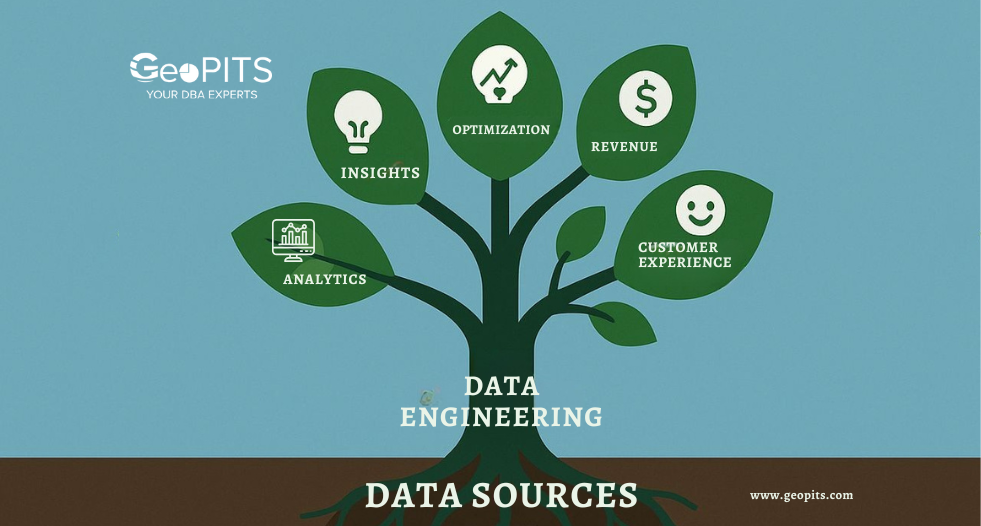Modern, data-driven organizations have used Oracle databases for several years. They now need alternatives that move away from Oracle’s licensing model. These options should offer the cost efficiency and flexibility of open-source options. As a result, a functional and strategic action plan is to migrate from Oracle to PostgreSQL.
Database migration can be challenging. However, with the Oracle to PostgreSQL migration, it can be very smooth and rewarding. This blog explains the process clearly and straightforwardly.
Why Companies Move from Oracle to PostgreSQL
The main drivers of migration are reducing costs and improving scalability.
- Lower licensing costs: PostgreSQL does not charge any regular license fees.
- More extensibility: You can use workload-adaptable extensions and tools in current times.
- Cloud readiness: PostgreSQL integrates with AWS, Azure, and Google Cloud.
- Performance improvements: PostgreSQL performs well with large datasets.
It signifies there are always updates, tools, and resources to utilize as the community supporting it is active. Migrating to PostgreSQL provides organizations with ownership and flexibility.
Step 1: Assess and Plan the Migration
Any migration begins with understanding what needs to move and the level of complexity it involves.
- A proper assessment should include the following:
- Listing all Oracle databases, schemas, and tables.
- Review data volumes, dependencies, and stored procedures.
- Identifying compatibility gaps, such as PL/SQL code that may require rewriting.
- Estimate downtime or reduce it through replication or phased migration.
A detailed plan acts like a blueprint. It will prevent missed steps while aligning all members involved, including database administrators, developers, and analysts.
Step 2: Schema Conversion
Schema conversion is the backbone of database migration. Here's how:
- Oracle's NUMBER could be mapped to NUMERIC or BIGINT.
- The PL/SQL functions and triggers may have to be rewritten in PL/pgSQL.
- Sequences and auto-increment fields must be mapped manually.
This process becomes easier with automated tools such as AWS SCT or Ora2Pg. Even then, it is very important to manually review them for correctness and performance optimization.
Step 3: Data Migration
Data Migration can be handled in several ways. It relies on the database size and the acceptable level of downtime.
Common techniques include:
- Dump and restore: suitable for smaller databases with short downtime windows.
- Replication-based migration: It will keep Oracle and PostgreSQL in sync until the final switch.
- ETL: This method is recommended for complex transformations or partial migrations.
Step 4: Application-Level Adjustments
Migration to PostgreSQL needs changes to the application. It's crucial because of differences in SQL and data handling. So, review:
- Performing SQL queries, joins, and calling stored procedures.
- Connection strings and authentication parameters.
- Object Relational Mapping compatibility (ORM).
Step 5: Testing and Validation
An Oracle-to-PostgreSQL migration is not complete without comprehensive testing that verifies data accuracy and system behavior.
Types of testing that matter:
- Data validation: Row counts, constraints, and relationships will be maintained.
- Functional testing: It ensures that all applications function as planned after the migration.
- Performance testing: It is easy to test response time, indexing, and query execution speed.
- UAT (User Acceptance Testing) involves business users who confirm functional readiness.
Testing confirms not only success but also builds confidence before full deployment.
Step 6: Cutover and Go-Live
The cutover can proceed once testing is approved. During this stage:
- Stop all transactions in an Oracle database.
- Migrate the last delta of changed data since the previous sync.
- Route applications and services to the running PostgreSQL instance.
- Provide close monitoring during the initial hours.
Step 7: Optimization after Migration
Work doesn't stop at migration. Tuning and optimization should include:
- Tuning the shared buffers and work memory parameters.
- Creating indexes based on new query patterns.
- Establish strategies for data backup or high-availability solutions.
- Review the query plans for performance progress.
Step 8: Training and Maintenance
Database migration is all about people, not technology. Teams that have worked with Oracle may take some time to become comfortable with PostgreSQL's tools and commands.
Ongoing maintenance should include:
- Updates and security patches.
- Performance audits.
- Backup verification.
- Query optimization reviews.
A well-maintained system means a long-term, successful database and stability.
Common Challenges During Oracle to PostgreSQL Migration
Even with careful planning, migrations bring a few challenges along. It includes:
- There are several distinctions between PL/SQL and PL/pgSQL procedures. Some incompatible data types require manual mapping
- Performance tuning may also be necessary after migration.
- Testing complexity, particularly for large systems or interdependent systems, is an issue.
Conclusion
The Oracle to Postgres migration is about freedom and flexibility. It is different from a technical migration and helps to build a modern, economical, and high-performance database environment. This makes an organization prepared for future development.
GeoPITS partners with organizations to make that transition, turning complexity into clarity through expert planning and execution.
Ready to move your database to PostgreSQL? Contact GeoPITS and make your transition smooth, secure, and future-ready.







